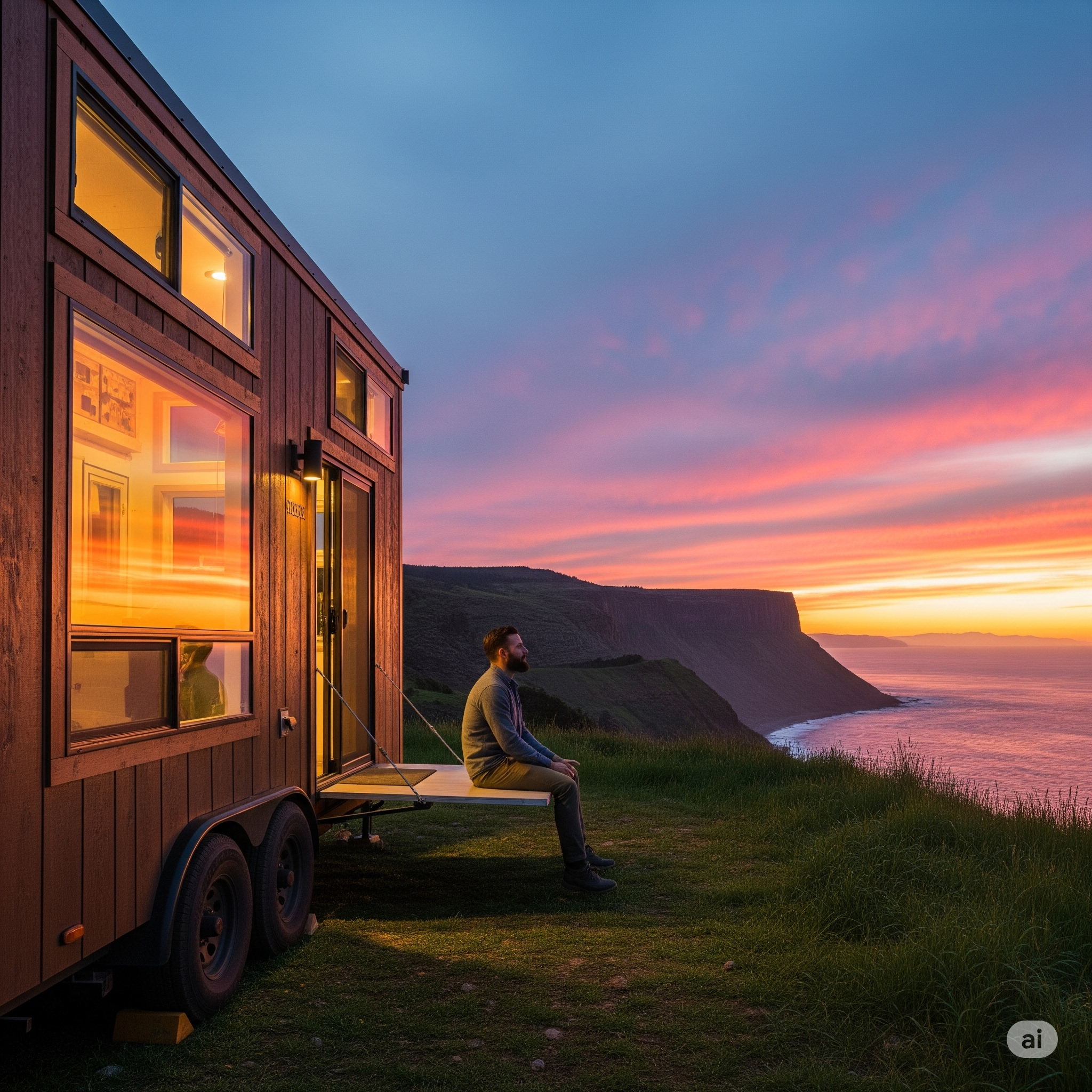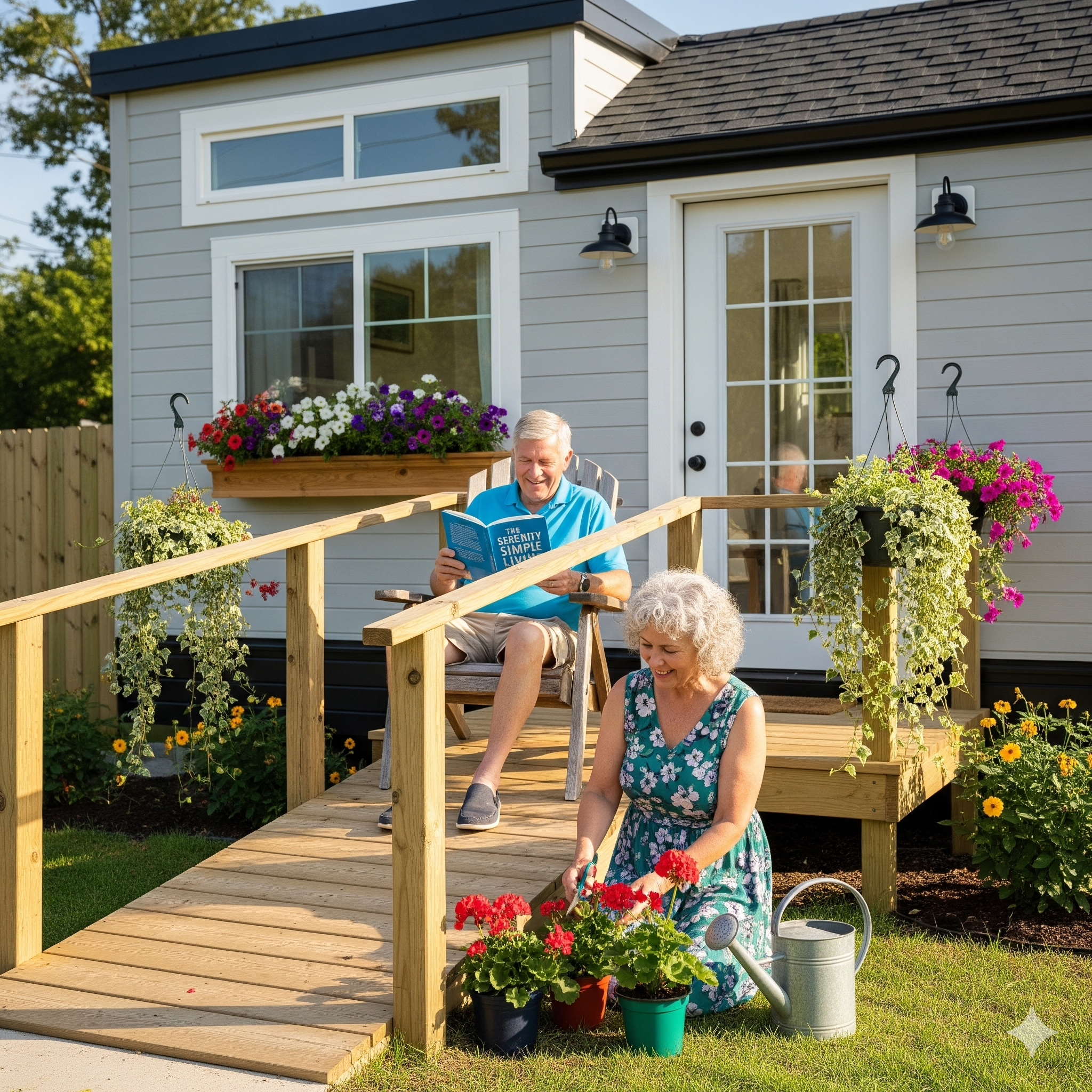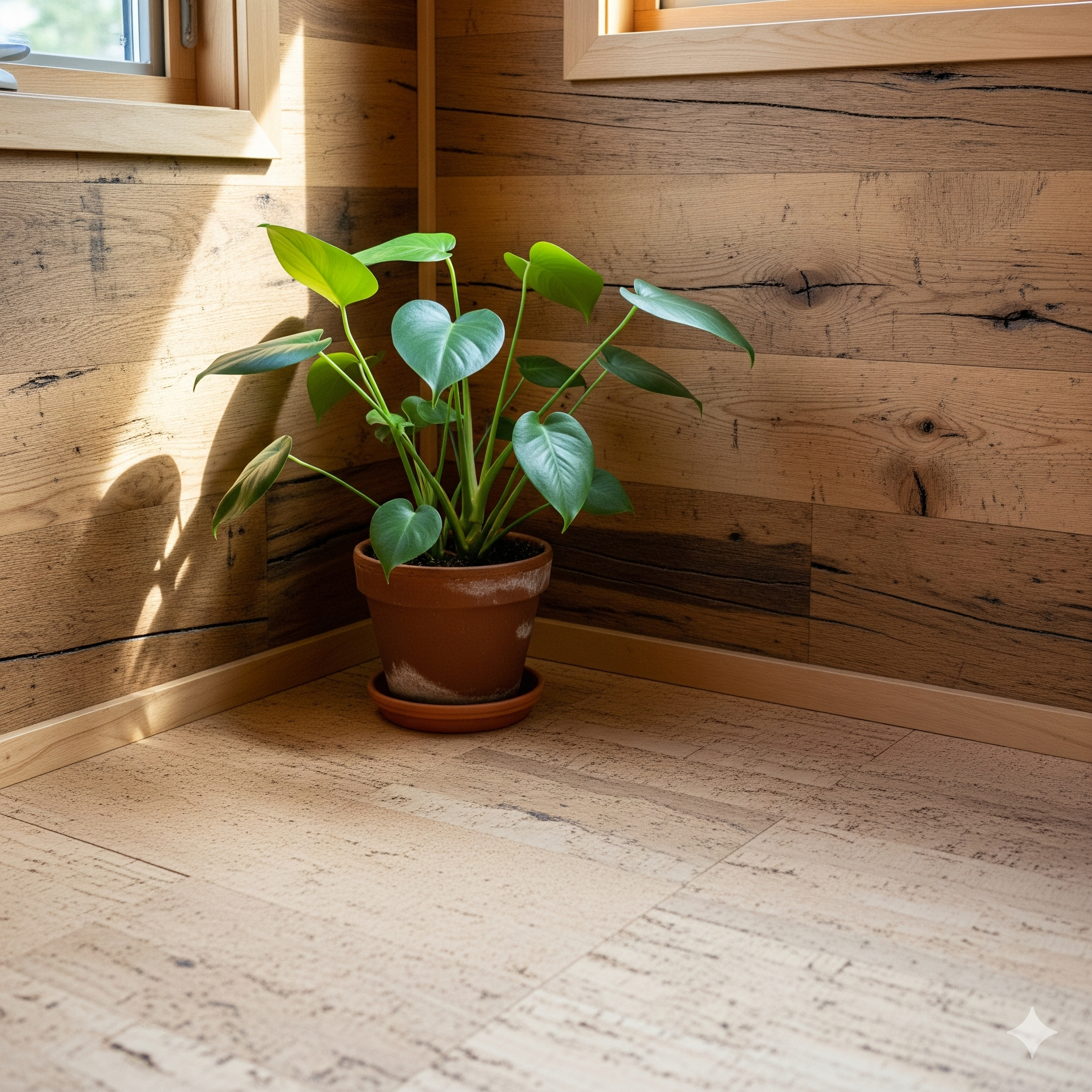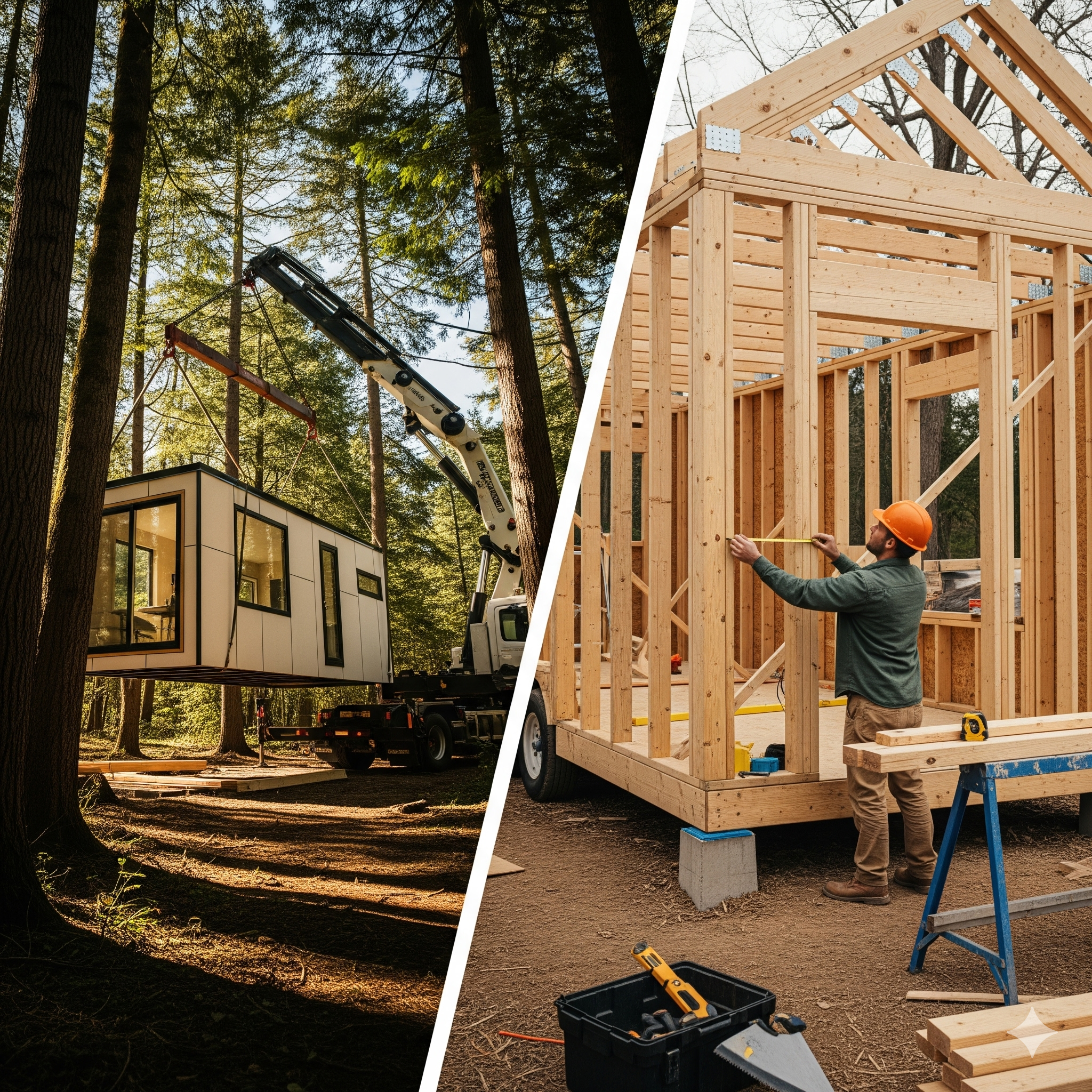Tiny House on Wheels: The Complete Guide (2025)
Your complete guide to a tiny house on wheels. Learn about trailers, building, laws, and the mobile tiny home lifestyle to start your journey today.
The Ultimate Guide to a Tiny House on Wheels
There is a unique allure to a home that can move with you, a freedom that is woven into the very fabric of its foundation. This is the promise of the tiny house on wheels (THOW). More than just a small structure, it’s a passport to a new way of living, where your backyard can be a mountain range one month and a coastal beach the next. It combines the craftsmanship and comfort of a custom-built home with the legal framework and mobility of a recreational vehicle (RV). This guide is your roadmap to understanding this incredible lifestyle, from the critical first step of choosing a trailer to the day-to-day realities of life on the move.
Here at NeatTinyHome.com, we know that building or buying a tiny house on wheels is a major undertaking. It requires a different set of considerations than a stationary home. You have to think like an architect, a road-tripper, and a logistician all at once. This article will break down the entire process into manageable parts. We’ll cover the non-negotiable aspects of a solid foundation, the unique challenges of building for movement, the complex legal landscape, and the practicalities of a truly mobile tiny home lifestyle. Let’s get started on the path to your new, adventurous life.

The Foundation is Everything: Choosing Your Trailer
Before you pick out paint colors or design a kitchen, you must focus on the single most important component of your tiny house on wheels: the trailer. This is not a place to cut corners. Your entire home, and your safety on the road, rests on this steel frame. I’ve seen builds compromised from the start because the owner chose an inadequate trailer. You need a trailer specifically designed for a tiny house, which is engineered to handle a massive, static load, unlike a standard utility or car hauler trailer. These purpose-built trailers feature heavy-duty axles, robust framing, and proper placement of structural cross-members to support your walls.
When selecting a trailer, the Gross Vehicle Weight Rating (GVWR) is the most critical number. This is the maximum legal weight of the trailer *plus* everything on it. Your finished tiny house must weigh less than this number. It’s essential to plan your build’s weight from the beginning and choose a trailer that can handle it with a comfortable margin of safety. Here are the key features to look for:
- New vs. Used: Always opt for a new, custom-built trailer. A used trailer may have hidden rust, bent axles, or structural fatigue that could lead to catastrophic failure.
- Axle Rating: Ensure the axles are rated to carry the load. For most tiny homes, you’ll need at least two, or often three, 7,000-pound rated axles.
- Brakes: Electric brakes on all axles are a legal and safety requirement in most places.
- Deck-Over vs. Drop-Axle: A deck-over design provides a flat building surface, while drop-axles can provide a few extra inches of interior headroom.
This is your foundation. Investing in a high-quality, custom-built trailer from a reputable tiny house trailer manufacturer is the best decision you can make for the longevity and safety of your mobile tiny home.

Building for the Road: Weight, Balance, and Durability
Constructing a tiny house on wheels is fundamentally different from building a stationary structure. Your home must be able to withstand the equivalent of a constant, low-grade earthquake every time it’s on the highway. This means every joint must be secured, every material choice must be considered for its weight, and the entire structure must be balanced. Weight is your biggest enemy. Every pound you add is a pound your truck has to pull and your trailer has to support. This is why builders often opt for lightweight materials like steel framing instead of traditional wood studs, or structural insulated panels (SIPs) which provide structure, sheathing, and insulation in one lightweight panel.
Proper weight distribution is just as important as the total weight. The goal is to have approximately 10-15% of the total home weight resting on the trailer’s tongue (the part that connects to the truck). Too much weight in the back can cause dangerous trailer sway, while too much on the tongue can overload the rear axle of your tow vehicle. This is why kitchens and bathrooms with heavy appliances and water tanks are often placed over the trailer’s axles. For guidance, many aspiring builders purchase professionally engineered plans from experienced companies like those featured on Tiny House Talk, as these plans are specifically designed with weight, balance, and road-worthiness in mind. Every cabinet, appliance, and piece of furniture must be securely fastened to ensure it doesn’t become a projectile during transit.

The Legal Maze: RVIA Seals, Towing Laws, and Parking
Navigating the legalities of a tiny house on wheels is often the most daunting part of the journey. Is it a house or an RV? The answer determines where you can put it. To gain access to the widest range of legal parking options, obtaining an RVIA (Recreational Vehicle Industry Association) certification is the gold standard. This seal certifies that your mobile tiny home was built to specific safety and construction standards covering everything from plumbing to electrical systems. Many RV parks, mobile home communities, and even some municipalities will not allow a THOW without this certification. This is why many people choose to buy from a certified builder rather than building their own.
When you’re on the road, you are subject to the Department of Transportation’s rules. In most of the U.S., a vehicle and trailer must be no more than 8.5 feet wide, 13.5 feet high, and typically under 65 feet in combined length to be towed without a special permit. This is why these dimensions are the standard for a tiny house on wheels. The biggest challenge remains finding a long-term parking spot. Options include RV parks, tiny house communities, leasing land from a private owner, or placing it on your own property as an Accessory Dwelling Unit (ADU), but only if local zoning laws allow it. Thoroughly researching the regulations in your desired location is a critical, non-skippable step. The RVIA’s official website is an excellent resource for understanding the standards that make this process easier.

Final Thoughts: The Journey and the Destination
The tiny house on wheels is more than a home; it’s a lifestyle choice that embodies adventure, freedom, and intentionality. It’s a complex project that demands careful planning, a respect for physics, and a deep understanding of local laws. From selecting the right trailer to securing the last cabinet latch, every step is a deliberate move towards a more mobile and self-directed life. The journey of building and owning a THOW is challenging, but the reward is a home that is truly your own, ready to follow wherever your dreams may lead. It’s the ultimate expression of living large by living small, with the open road as your ever-changing front yard.
What’s Your Dream Destination?
If you had a tiny house on wheels, where is the first place you would take it? A national park, a quiet beach, or across the country? Share your dream destinations in the comments below!
Frequently Asked Questions
How much does a tiny house on wheels cost?
The cost varies dramatically. A DIY build can range from $30,000 to $80,000, depending on materials. A professionally built tiny house on wheels from a certified builder typically costs between $80,000 and $180,000+, depending on size, features, and finishes.
What kind of truck do you need to tow a tiny house?
You need a powerful truck. Most tiny homes weigh between 10,000 and 15,000 pounds. This generally requires a three-quarter-ton (like a Ford F-250 or Ram 2500) or, more often, a one-ton (like a Ford F-350 or Ram 3500) truck with a high towing capacity and a tow package.
Is insuring a tiny house on wheels difficult?
It can be, but it’s getting easier. Getting an RVIA certification is the best way to secure insurance, as many companies will insure it as an RV. For self-builds, you may need to find a specialty insurer that understands the unique nature of a mobile tiny home.




Post Comment